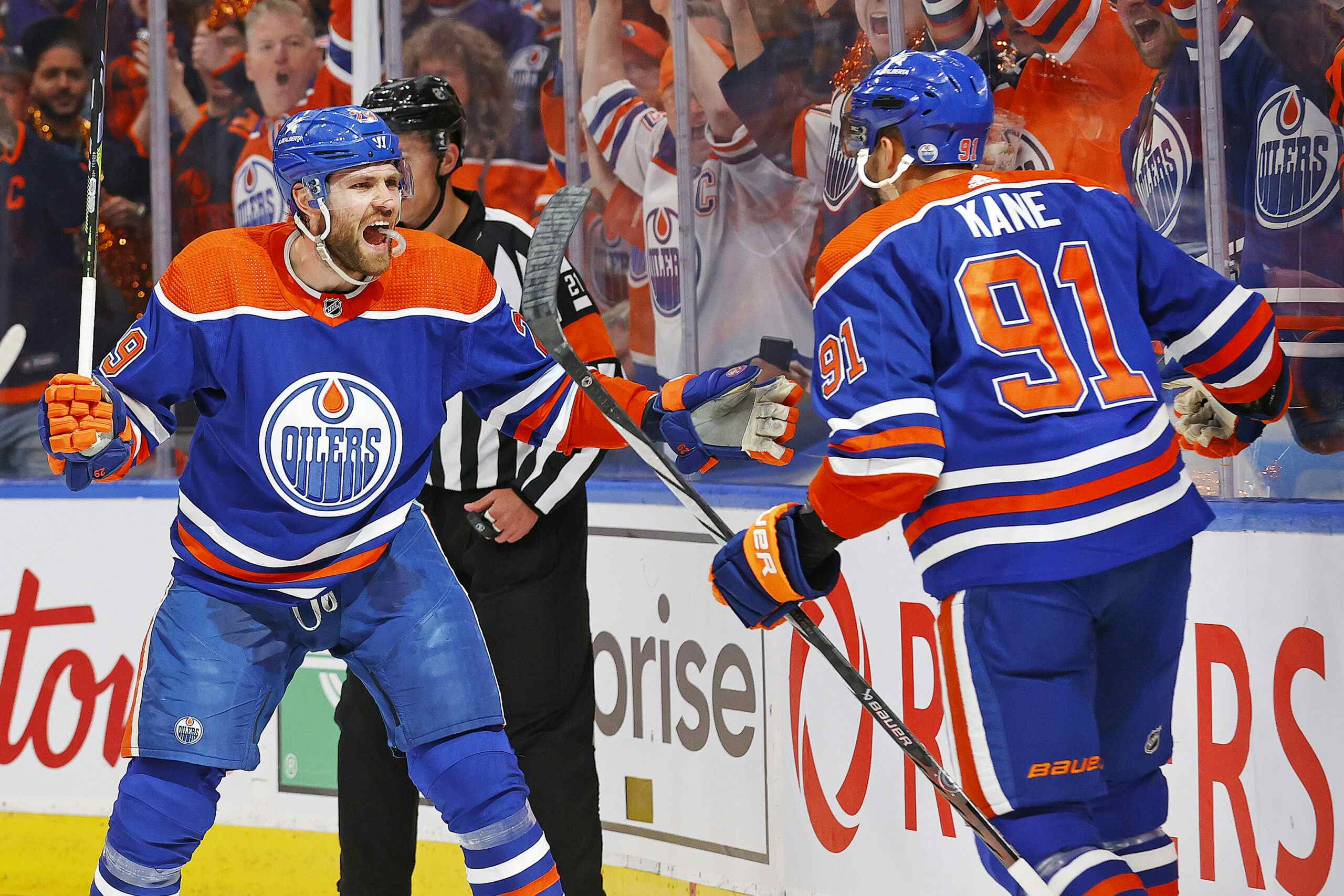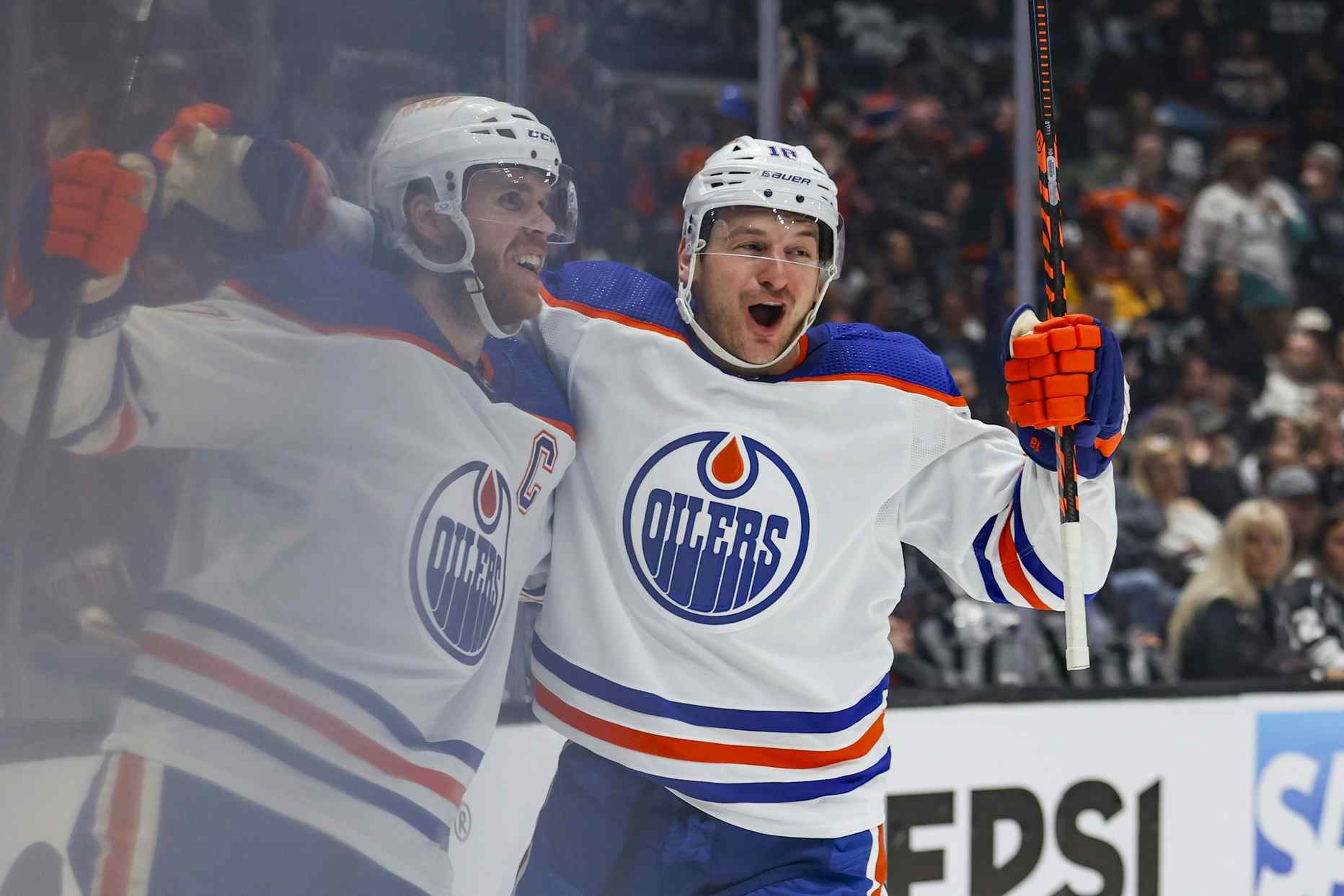Ryan Nugent-Hopkins: 106 Miles To Chicago
We’re nearing the end of the 2011-12 season now. The Oilers have a pair of games left on the schedule and will close out the season on Saturday against the Vancouver Canucks. From a team perspective, there isn’t much left to see; on the individual level there are the usual battles with guys trying to stay with the team or in the league. Jordan Eberle and Ryan Nugent-Hopkins will be putting the final touches on campaigns that have them in the running for the Lady Byng and the Calder, respectively.
The latter point is the one I want to highlight this morning.
Ryan Nugent-Hopkins has had an unreal season. We’ve all seen the splendid videos put together by our friends at Jeanshorts and Baggedmilk – there’s a real hope among Oilers fans that Nugent-Hopkins will win the rookie of the year award, the first of any player to wear Oilers’ colours (Wayne Gretzky having been robbed by some ugly eligibility nonsense).
I don’t think it will be enough. Gabriel Landeskog is having an amazing season in Colorado and has a lot of backers among the media (the guys who are actually voting). If I were voting for the award he would be my choice.
The reason I’d choose Landeskog over Nugent-Hopkins is because the award is given to the player most proficient in his first year of competition. I feel Landeskog’s season-long two-way play trumps Nugent-Hopkins’ offensive ability, particularly given the time missed by the latter. The award is not given to the player projected to have the best career – if that were the criteria, I’d be voting for Nugent-Hopkins.
In fact, if I had to pick one untouchable player on the Edmonton Oilers, that player would be Nugent-Hopkins. It’s not an easy choice – Taylor Hall and Jordan Eberle being the talents they are – but after some skepticism this summer I’m sold on the club’s star centre.
From hockey-reference.com, here is the entire list of rookies aged 18 or 19 to play at least 50 games and record at least 0.5 points-per-game since the year 2000. I’ve taken the liberty of projecting those point totals over an 82-game schedule:
| Player | Season | Age | Tm | GP | G | A | PTS | PTS/82 |
|---|---|---|---|---|---|---|---|---|
| Sidney Crosby | 2005-06 | 18 | PIT | 81 | 39 | 63 | 102 | 103 |
| Patrick Kane | 2007-08 | 19 | CHI | 82 | 21 | 51 | 72 | 72 |
| Ryan Nugent-Hopkins | 2011-12 | 18 | EDM | 60 | 18 | 33 | 51 | 70 |
| Anze Kopitar | 2006-07 | 19 | LAK | 72 | 20 | 41 | 61 | 69 |
| Jonathan Toews | 2007-08 | 19 | CHI | 64 | 24 | 30 | 54 | 69 |
| Ilya Kovalchuk | 2001-02 | 18 | ATL | 65 | 29 | 22 | 51 | 64 |
| Jeff Skinner | 2010-11 | 18 | CAR | 82 | 31 | 32 | 63 | 63 |
| Matt Duchene | 2009-10 | 19 | COL | 81 | 24 | 31 | 55 | 56 |
| Peter Mueller | 2007-08 | 19 | PHX | 81 | 22 | 32 | 54 | 55 |
| John Tavares | 2009-10 | 19 | NYI | 82 | 24 | 30 | 54 | 54 |
| Taylor Hall | 2010-11 | 19 | EDM | 65 | 22 | 20 | 42 | 53 |
| Gabriel Landeskog | 2011-12 | 19 | COL | 80 | 22 | 29 | 51 | 52 |
| Sam Gagner | 2007-08 | 18 | EDM | 79 | 13 | 36 | 49 | 51 |
| Nikolai Zherdev | 2003-04 | 19 | CBJ | 57 | 13 | 21 | 34 | 49 |
| Martin Havlat | 2000-01 | 19 | OTT | 73 | 19 | 23 | 42 | 47 |
| Steven Stamkos | 2008-09 | 18 | TBL | 79 | 23 | 23 | 46 | 48 |
| Patrice Bergeron | 2003-04 | 18 | BOS | 71 | 16 | 23 | 39 | 45 |
| Rick Nash | 2002-03 | 18 | CBJ | 74 | 17 | 22 | 39 | 43 |
| Jordan Staal | 2006-07 | 18 | PIT | 81 | 29 | 13 | 42 | 43 |
| Ales Hemsky | 2002-03 | 19 | EDM | 59 | 6 | 24 | 30 | 42 |
| Marian Gaborik | 2000-01 | 18 | MIN | 71 | 18 | 18 | 36 | 42 |
Sidney Crosby, unsurprisingly, sits alone at the top of the list. Right beneath him are four tightly-grouped players with clearance over the rest of the rookies considered here: Patrick Kane, Anze Kopitar, Jonathan Toews, and Ryan Nugent-Hopkins.
Kane was one of the older eligible players in his draft class – he was 18 years and 11 months old when his rookie year kicked off in 2007-08. Neither Jonathan Toews nor Anze Kopitar played in their first year of eligibility – Toews was 19 years and six months old in his rookie season; Kopitar 19 years and two months. At 18 years and six months old this October, Nugent-Hopkins managed to equal them all at a younger age.
That’s incredibly exciting. Even without adjusting for era effects, Nugent-Hopkins is within a whisper of Joe Sakic’s offense as a rookie – the great centre for the Avs and Nordiques scored at a 73-point pace in his 1988-89 rookie season. Adjust for era effects, and we can start talking about Denis Savard and Steve Yzerman and Ron Francis. Naturally, it’s unfair to compare him to those players, who followed up their rookie seasons with hundreds and hundreds of quality games, but still: 51 points in 60 games in this day and age is a rare feat and likely the harbinger of a special career.
There’s more. Nugent-Hopkins hasn’t been at the same consistent level throughout the season; rather, he’s improved his performance every step of the way. Here is his season divided into thirds and presented with some advanced stats from Vic Ferrari’s timeonice.com:
| Segment | Def. Zone | Off. Zone | ZoneStart | GF | GA | Fenwick% |
|---|---|---|---|---|---|---|
| First 20 games | 26 | 69 | 72.63% | 12 | 9 | 49.6 |
| Second 20 games | 57 | 84 | 59.57% | 11 | 12 | 47.7 |
| Third 20 games | 62 | 86 | 58.11% | 19 | 14 | 50.2 |
For the first 20 games, Tom Renney was starting the Nugent-Hopkins line in the offensive zone three-quarters of the time; he’s dialed that back to a more reasonable number (a still favourable ~60%) and added minutes overall. Fenwick is a ratio based on shots and missed shots (e.g. if a player is on the ice for 50 shots and 25 missed shots for, and the same number against, he’d have a ratio of 50.0%) and it correlates very closely to scoring chances. We can see Nugent-Hopkins was right around the break-even line under highly favourable circumstances to start his career, dipped a little as Renney increased his ice-time, and then found break-even again in the final third of the season. Keep in mind that Nugent-Hopkins has only really begun seeing the best opponents in that last third – we aren’t showing Quality of Competition here, but by eye it has slowly escalated as the season as continued on.
The two-way game is coming along, and in terms of pure offense Nugent-Hopkins’ performance as a rookie is ahead of that we saw not just from Jordan Eberle and Taylor Hall, but also what we’ve seen from many of the best of the last decade. It’s all open road from here.
Recent articles from Jonathan Willis





